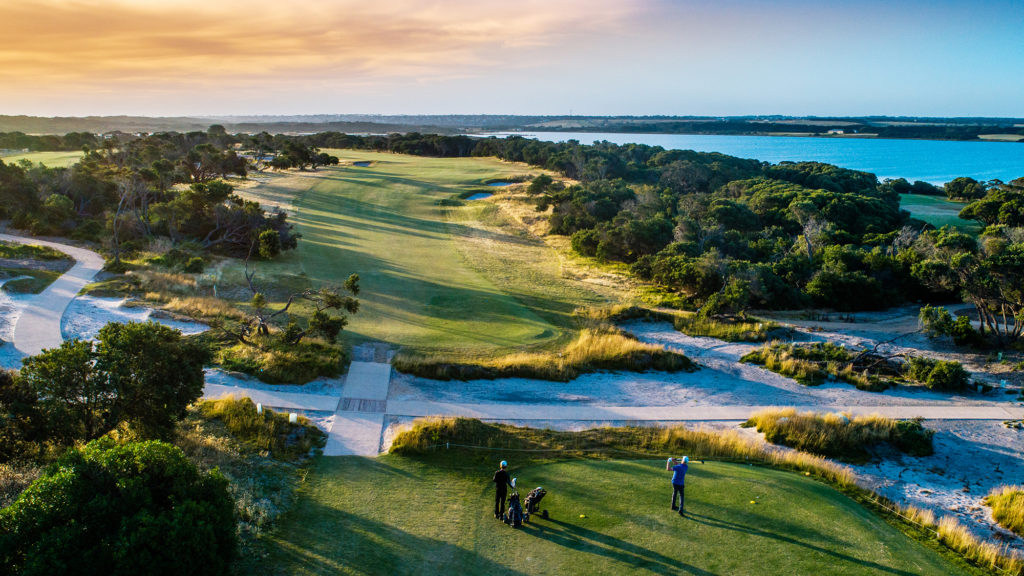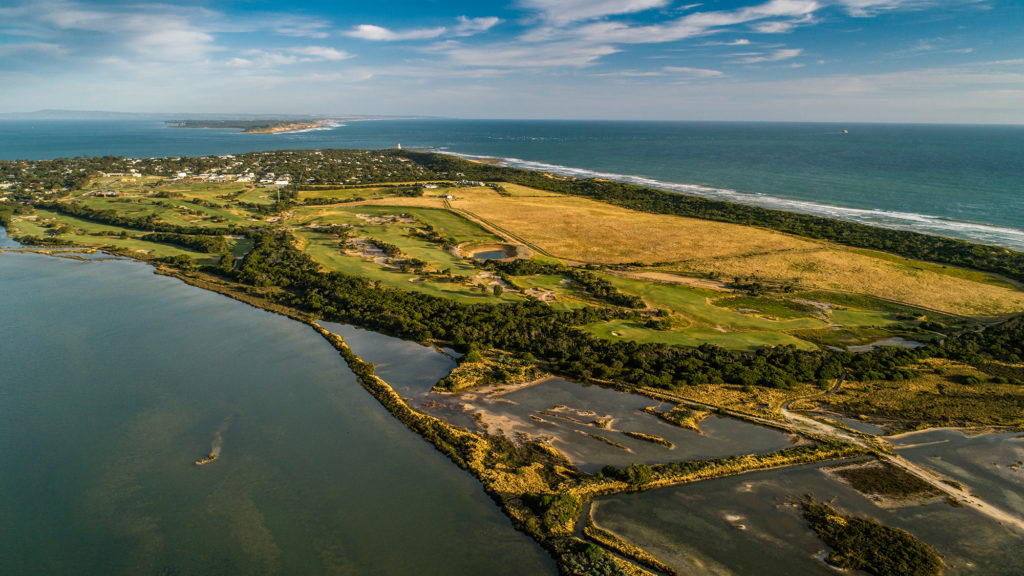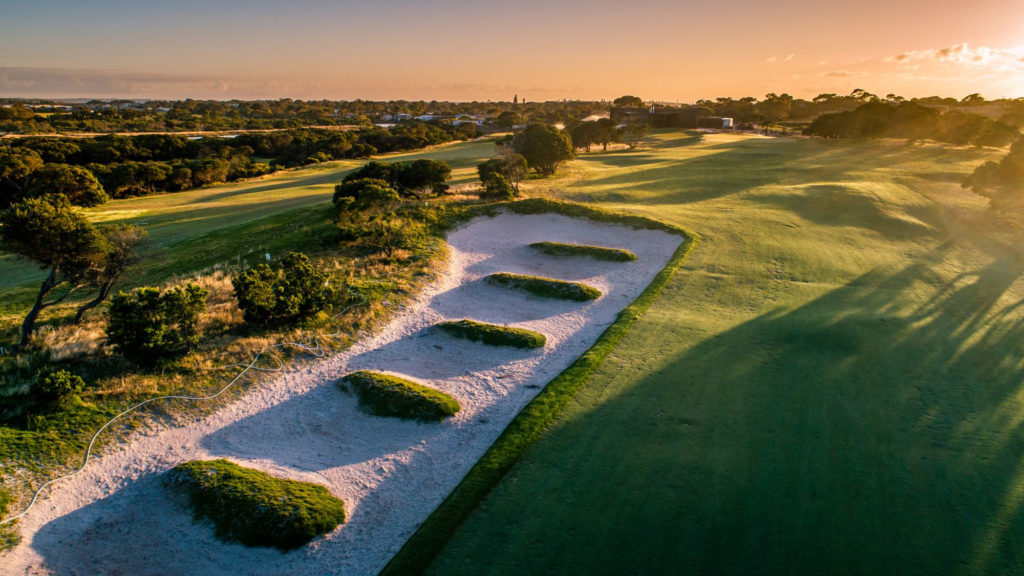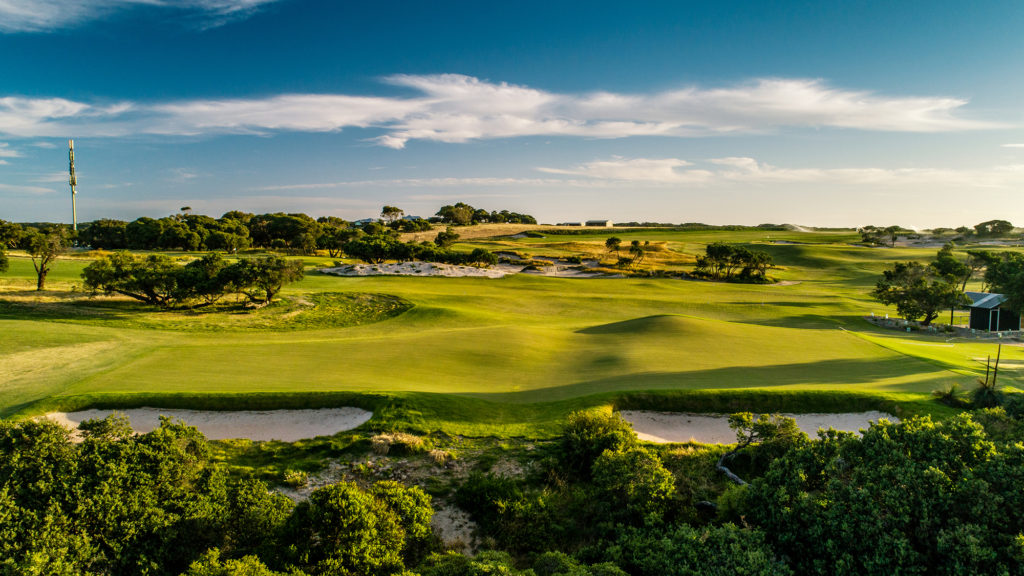A revitalised Lonsdale Links layout has captured the essence of links golf and provided experts and novice players alike an endlessly fascinating place to play.
There’s an art to imitating, and imitating well.
In golf-course architecture, paying homage to the past is an easy decision to make but a difficult task to pull off. Naturally, you don’t want to mess up the tribute and be left with a poor imitation of the original, while even a successful rendition risks generating a ‘so-what-that’s-been-done-before’ sentiment. Yet it was this precise gamble the design firm of Ogilvy Cocking Mead (OCM) took at Lonsdale Links, and it paid off.
The course today represents a complete transformation from the previous incarnation. The old Lonsdale was a neat and tidy layout in a nice location but with few truly remarkable design traits. In renovating and reinvigorating the course, OCM decided to adapt or recreate some of the most revered architectural features from elsewhere in the world of golf and congregate them on Victoria’s Bellarine Peninsula. The bold move has taken Lonsdale from an easy-to-bypass option to a must-play course in the region.

These days more than ever, you might not be able to play the Redan hole at North Berwick, challenge the menacing green complex of the Road Hole at the Old Course at St Andrews or decipher the various Biarritz greens around the globe. Yet in one round at Lonsdale Links, you can sample a taste of all those great features and more. Nine of the 18 holes pay homage to the enduring design work of the great Charles Blair Macdonald or are adaptations from elsewhere. There’s a Biarritz green at the second, a thumbprint-style depression within the 12th green, a reverse take of the Redan at 14 and even a nod to the famous Road Hole on the Old Course at the 16th.
“It wasn’t like a lot of those ideas were really preconceived before we started,” says Ashley Mead, the ‘M’ in OCM, of the decision to replicate or honour iconic designs through ‘template’ holes. “There was a handful, but a lot of them did evolve during construction.”
The opening hole is a prime example. Named “Alps” after the 17th hole at Prestwick in Scotland and enjoying the requisite blind or semi-blind second shot, Lonsdale’s first is a shorter version at 305 metres yet borrows elements of the hole at Prestwick and its quasi-replica at The National Golf Links of America’s third hole. It unfolded that way rather than being plotted out on paper beforehand, Mead says.
“As we were starting to move the dirt, there was an opportunity to put a big mound in the fairway as the ideal driving line up over the hill so it was blind over that area. So that evolved as being the Alps hole.”

Two more factors were at play. Firstly, OCM (whose history with Lonsdale dates back to 2000 under the former Michael Clayton Golf Design) accounted for the other courses on the Bellarine Peninsula and sought to create a point of difference. Secondly was a trip to the United States the firm undertook in 2012 that included time spent at The National Golf Links where Macdonald appropriated several design traits from the United Kingdom in penning the famous layout on New York’s Long Island. OCM recognised an opportunity to do something similar at Lonsdale.
For those who recall the prior version of the course, not everything was altered. The routing of the holes hugging the saltmarshes on the edge of Lake Victoria remain as a key part of the front nine, although the bunkering and green complexes received a refresh. There was initial talk of using that portion of the property for more holes, however it proved too environmentally sensitive so the club instead purchased some adjoining farmland along a different boundary and utilised that space. This meant that holes 11, 14, 15 and 16 are brand new, while most of the last 12 holes were reworked from a position perspective.

A roadless road hole
The redesigned layout opened for play last December, although the 16th hole saw play a little earlier. It might be the best hole on the course; and if your sense of golf-architectural nous doesn’t allow such a tag, then at least acknowledge it as the most fun hole. The 16th is a par 4 playing anywhere from 215 to 275 metres where the putting surface is akin to the 17th green at St Andrews, replete with a wicked central bunker. Played from an elevated tee and certainly reachable by many golfers with a good drive, the green is set flush against an out-of-bounds fence and wraps around that bunker.
It’s an admirable tribute to the Road Hole, although with a quite different green complex. One key difference to its Scottish counterpart is the nature of the fence. Rather than a stone wall that can repel stray shots, the boundary at Lonsdale is a simple wooden fence where balls are far more prone to slipping out-of-bounds than being ‘saved’. The fence is also so close to the green that golf’s most dire penalty is a mere pace away from its shortest grass. It is a feature that took a little time to gel with Lonsdale’s regular golfers.
“A lot of the members suggested [alterations],” Mead says. “They said, ‘Can’t we put a bit of metal up at the bottom of the fence so the ball doesn’t go out-of-bounds?’ And I said, ‘When you go tenpin bowling, do you put the bumpers up every time you play?’ But I think it’s the frustration of seeing the ball just sitting on the other side of the fence – out-of-bounds and knowing you can’t play it – or you’re putting out-of-bounds, which has happened.”

Another design trait unfamiliar to many Australian golfers is the straight edges to Lonsdale’s new greens. Golf is a game that loves its curves, yet the occasional squared edge represents a healthy departure from free-flowing shapes. The green at the par-5 11th hole is a perfect rectangle yet loses no artistic flair thanks to the ripples within the putting surface, the pair of shaggy mounds guarding the entrance and the elongated hump at the rear which also shields the course’s main water storage facility from fairway view. It’s a classic case of the linear and non-linear merging to create something memorable.
“It’s funny,” Mead reflects, “I found that if you look at aerial photos you can see the straight lines but you really don’t notice it that much when you’re on the ground playing the golf course. You might see it at the front of the green or something like that, but you don’t know a lot of those holes are quite straight.”
Yet perhaps Lonsdale Links’ greatest asset is its overall playability. High handicappers and occasional golfers will be able to navigate safe paths from tee to green on all holes, while the challenge is not diluted in any way for better players, even at a modest 5,505 metres. In fact, Lonsdale’s low handicappers took a while to unlock its secrets.
“A lot of the young guys were struggling to get to grips with the course. They couldn’t work it out,” Mead says. “These were guys who were single figures or lower than that and they just couldn’t really work the course out. They were going out with their handicaps and they were frustrated, and I think they were mainly frustrated because of the length of the course at just over 5,500 metres. They were really struggling to score on it. But those problems seem to have gone away now that they’ve been able to work out what positions they need to get in to get to certain pins.
“And that’s nice to hear that. You never want a course to tell its story from day one; you want golfers to be able to work it out and where they’ve got to go and what position they want to be in to get to those ideal pin positions.”
The details
Lonsdale Links
Where: Clubhouse Drive, Point Lonsdale VIC 3225
Phone: (03) 5258 1955
Web: lonsdalelinks.com.au
Photography by nick wall / airswing media



